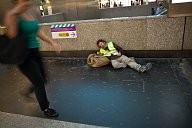Refine search
No keyword found to refine search
keywords EN
Places
Names
88 documents found
| 1 | 2 |
Documents per page :
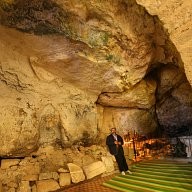
Cave of the Seven Sleepers in Afsin
Manoël Pénicaud / Le Pictorium
LePictorium_0169819.jpg
Known in Islam as the People of the Cave
(Ahl al-Kahf in Arabic), the Seven Sleepers are said to have miraculously slept for several centuries in a cave in order to escape from the persecutions of the Roman Empire. Their awakening is a metaphor for the resurrection
of the body, in both Christianity and in Islam
(Qur’anic sura ‘The Cave’). The narratives
of the Seven Sleepers were widely disseminated. Numerous caves in the Mediterranean region are considered to be sacred places where this miracle occurred. This legend has sometimes given rise to joint veneration by Christians and Muslims.
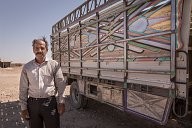
Syria: Ain Issa displaced people camp
Chris Huby / Le Pictorium
LePictorium_0165747.jpg
Syria - Rojava - Syrian North - June 30 2017. A refugee from Raqqa.
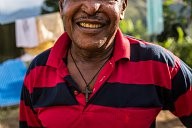
Bolivia - afrobolivianos
Chris Huby / Le Pictorium
LePictorium_0159622.jpg
February 2017 - BOLIVIA / Region of Coroico / Chipita / An Afro villager wearing a cross and a tooth-ring - The Afrobolivianos are a Black African minority living in Bolivia. They were used in the transatlantic slave trade and settled in the Yungas of the department of La Paz, where they cultivate coca.
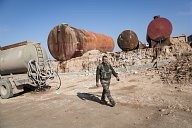
Syria / Rojava - Wrath of the Euphrates
Chris Huby / Le Pictorium
LePictorium_0159497.jpg
Syria ROJAVA / Dec16 - Jan17. a YPG soldier is walking in front of water and petrol supplies, in Aïn Issa basement.
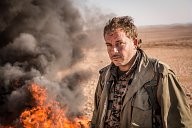
Syria / Rojava - Wrath of the Euphrates
Chris Huby / Le Pictorium
LePictorium_0159499.jpg
SYRIA ROJAVA / QALLAT JABBER village - Portrait of a YPG solider - The night before, this village was liberated from ISIS. This place is only 20 kms from Raqqa. The men are resting.
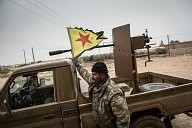
Syria / Rojava - Wrath of the Euphrates
Chris Huby / Le Pictorium
LePictorium_0159507.jpg
SYRIE ROJAVA / An YPG soldier in front of a Douchka.
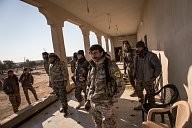
Syria / Rojava - Wrath of the Euphrates
Chris Huby / Le Pictorium
LePictorium_0159528.jpg
SYRIA / ROJAVA / SHE BHER village - A platoon of YPG - the YPG platoon has just liberate the village from ISIS, this place is not far from Raqqa.
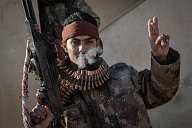
Syria / Rojava - Wrath of the Euphrates
Chris Huby / Le Pictorium
LePictorium_0159532.jpg
SYRIA - ROJAVA - Dec16 and Jan17 - Portrait of a young Kurdish YPG following the liberation of a village.
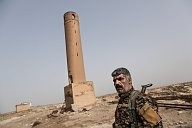
Syria / Rojava - Wrath of the Euphrates
Chris Huby / Le Pictorium
LePictorium_0159576.jpg
Jan 7- SYRIA ROJAVA / NORTH SYRIA / NEAR RAQQA / QALAT JABAR CASTLE - The SDF (Syrian Democratic Forces) with YPG (kurds) took back the famous castle from ISIS. A YPG soldier is going trough the castle.
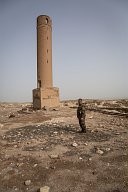
WRATH OF EUPHRATES
Chris Huby / Le Pictorium
LePictorium_0149266.jpg
Jan 7- SYRIA ROJAVA / NORTH SYRIA / NEAR RAQQA / QALAT JABAR CASTLE - The SDF (Syrian Democratic Forces) with YPG (kurds) took back the famous castle from ISIS. A YPG soldier is going trough the castle.
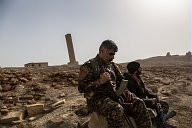
WRATH OF EUPHRATES
Chris Huby / Le Pictorium
LePictorium_0149274.jpg
Jan 7- SYRIA ROJAVA / NORTH SYRIA / NEAR RAQQA / QALAT JABAR CASTLE - The SDF (Syrian Democratic Forces) with YPG (kurds) took back the famous castle from ISIS. Some YPG soldiers are going trough the castle.
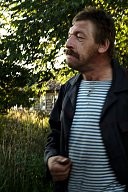
Oblast Arkhanglesk, in Russia...
Arnaud De Grave / Le Pictorium
LePictorium_0148778.jpg
An inhabitant of a small village in the Russian countryside.
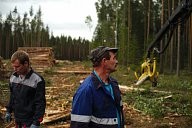
Oblast Arkhanglesk, in Russia...
Arnaud De Grave / Le Pictorium
LePictorium_0148838.jpg
A modern forestry company uses machines to cut the trees. Volumes are about 10 times more than without the machine.
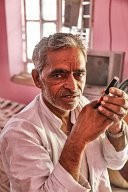
Portraits of men in Rajasthan
Sandrine Huet / Le Pictorium
LePictorium_0146582.jpg
Men of Rajasthan are very often breeders, ex nomads called Raikas.
they wear a 9 meter-long turban that is the main piece of their traditional costume. It has multi purposes and informs on the man's social status. Men in Rajasthan often have a mustache as a symbol of their virility.
they wear a 9 meter-long turban that is the main piece of their traditional costume. It has multi purposes and informs on the man's social status. Men in Rajasthan often have a mustache as a symbol of their virility.
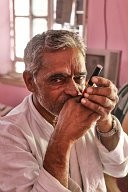
Portraits of men in Rajasthan
Sandrine Huet / Le Pictorium
LePictorium_0146583.jpg
Men of Rajasthan are very often breeders, ex nomads called Raikas.
they wear a 9 meter-long turban that is the main piece of their traditional costume. It has multi purposes and informs on the man's social status. Men in Rajasthan often have a mustache as a symbol of their virility.
they wear a 9 meter-long turban that is the main piece of their traditional costume. It has multi purposes and informs on the man's social status. Men in Rajasthan often have a mustache as a symbol of their virility.
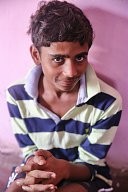
Portraits of men in Rajasthan
Sandrine Huet / Le Pictorium
LePictorium_0146584.jpg
Men of Rajasthan are very often breeders, ex nomads called Raikas.
they wear a 9 meter-long turban that is the main piece of their traditional costume. It has multi purposes and informs on the man's social status. Men in Rajasthan often have a mustache as a symbol of their virility.
they wear a 9 meter-long turban that is the main piece of their traditional costume. It has multi purposes and informs on the man's social status. Men in Rajasthan often have a mustache as a symbol of their virility.
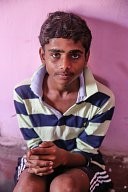
Portraits of men in Rajasthan
Sandrine Huet / Le Pictorium
LePictorium_0146585.jpg
Men of Rajasthan are very often breeders, ex nomads called Raikas.
they wear a 9 meter-long turban that is the main piece of their traditional costume. It has multi purposes and informs on the man's social status. Men in Rajasthan often have a mustache as a symbol of their virility.
they wear a 9 meter-long turban that is the main piece of their traditional costume. It has multi purposes and informs on the man's social status. Men in Rajasthan often have a mustache as a symbol of their virility.
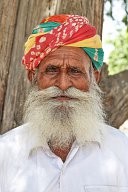
Portraits of men in Rajasthan
Sandrine Huet / Le Pictorium
LePictorium_0146588.jpg
Men of Rajasthan are very often breeders, ex nomads called Raikas.
they wear a 9 meter-long turban that is the main piece of their traditional costume. It has multi purposes and informs on the man's social status. Men in Rajasthan often have a mustache as a symbol of their virility.
they wear a 9 meter-long turban that is the main piece of their traditional costume. It has multi purposes and informs on the man's social status. Men in Rajasthan often have a mustache as a symbol of their virility.
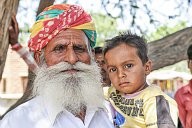
Portraits of men in Rajasthan
Sandrine Huet / Le Pictorium
LePictorium_0146589.jpg
Men of Rajasthan are very often breeders, ex nomads called Raikas.
they wear a 9 meter-long turban that is the main piece of their traditional costume. It has multi purposes and informs on the man's social status. Men in Rajasthan often have a mustache as a symbol of their virility.
they wear a 9 meter-long turban that is the main piece of their traditional costume. It has multi purposes and informs on the man's social status. Men in Rajasthan often have a mustache as a symbol of their virility.
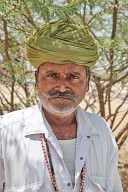
Portraits of men in Rajasthan
Sandrine Huet / Le Pictorium
LePictorium_0146590.jpg
Men of Rajasthan are very often breeders, ex nomads called Raikas.
they wear a 9 meter-long turban that is the main piece of their traditional costume. It has multi purposes and informs on the man's social status. Men in Rajasthan often have a mustache as a symbol of their virility.
they wear a 9 meter-long turban that is the main piece of their traditional costume. It has multi purposes and informs on the man's social status. Men in Rajasthan often have a mustache as a symbol of their virility.
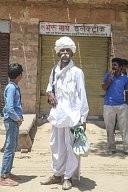
Portraits of men in Rajasthan
Sandrine Huet / Le Pictorium
LePictorium_0146591.jpg
Men of Rajasthan are very often breeders, ex nomads called Raikas.
they wear a 9 meter-long turban that is the main piece of their traditional costume. It has multi purposes and informs on the man's social status. Men in Rajasthan often have a mustache as a symbol of their virility.
they wear a 9 meter-long turban that is the main piece of their traditional costume. It has multi purposes and informs on the man's social status. Men in Rajasthan often have a mustache as a symbol of their virility.
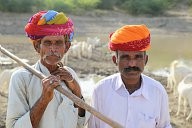
Portraits of men in Rajasthan
Sandrine Huet / Le Pictorium
LePictorium_0146592.jpg
Men of Rajasthan are very often breeders, ex nomads called Raikas.
they wear a 9 meter-long turban that is the main piece of their traditional costume. It has multi purposes and informs on the man's social status. Men in Rajasthan often have a mustache as a symbol of their virility.
they wear a 9 meter-long turban that is the main piece of their traditional costume. It has multi purposes and informs on the man's social status. Men in Rajasthan often have a mustache as a symbol of their virility.
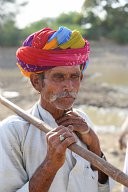
Portraits of men in Rajasthan
Sandrine Huet / Le Pictorium
LePictorium_0146593.jpg
Men of Rajasthan are very often breeders, ex nomads called Raikas.
they wear a 9 meter-long turban that is the main piece of their traditional costume. It has multi purposes and informs on the man's social status. Men in Rajasthan often have a mustache as a symbol of their virility.
they wear a 9 meter-long turban that is the main piece of their traditional costume. It has multi purposes and informs on the man's social status. Men in Rajasthan often have a mustache as a symbol of their virility.
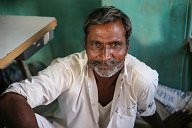
Portraits of men in Rajasthan
Sandrine Huet / Le Pictorium
LePictorium_0146594.jpg
Men of Rajasthan are very often breeders, ex nomads called Raikas.
they wear a 9 meter-long turban that is the main piece of their traditional costume. It has multi purposes and informs on the man's social status. Men in Rajasthan often have a mustache as a symbol of their virility.
they wear a 9 meter-long turban that is the main piece of their traditional costume. It has multi purposes and informs on the man's social status. Men in Rajasthan often have a mustache as a symbol of their virility.
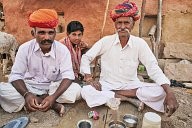
Portraits of men in Rajasthan
Sandrine Huet / Le Pictorium
LePictorium_0146595.jpg
Men of Rajasthan are very often breeders, ex nomads called Raikas.
they wear a 9 meter-long turban that is the main piece of their traditional costume. It has multi purposes and informs on the man's social status. Men in Rajasthan often have a mustache as a symbol of their virility.
they wear a 9 meter-long turban that is the main piece of their traditional costume. It has multi purposes and informs on the man's social status. Men in Rajasthan often have a mustache as a symbol of their virility.
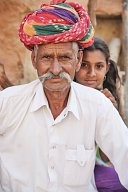
Portraits of men in Rajasthan
Sandrine Huet / Le Pictorium
LePictorium_0146596.jpg
Men of Rajasthan are very often breeders, ex nomads called Raikas.
they wear a 9 meter-long turban that is the main piece of their traditional costume. It has multi purposes and informs on the man's social status. Men in Rajasthan often have a mustache as a symbol of their virility.
they wear a 9 meter-long turban that is the main piece of their traditional costume. It has multi purposes and informs on the man's social status. Men in Rajasthan often have a mustache as a symbol of their virility.
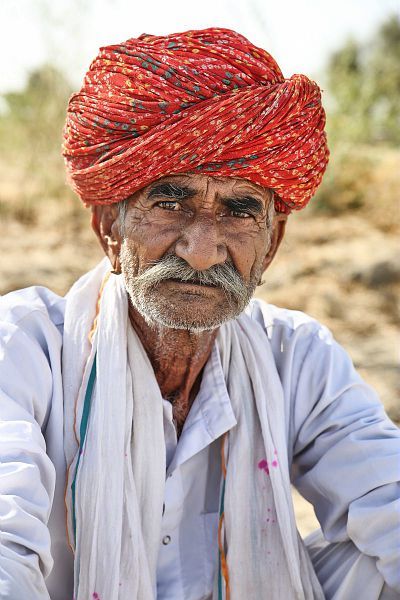
Portraits of men in Rajasthan
Sandrine Huet / Le Pictorium
LePictorium_0146609.jpg
Men of Rajasthan are very often breeders, ex nomads called Raikas.
they wear a 9 meter-long turban that is the main piece of their traditional costume. It has multi purposes and informs on the man's social status. Men in Rajasthan often have a mustache as a symbol of their virility.
they wear a 9 meter-long turban that is the main piece of their traditional costume. It has multi purposes and informs on the man's social status. Men in Rajasthan often have a mustache as a symbol of their virility.
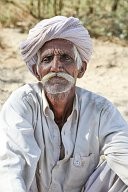
Portraits of men in Rajasthan
Sandrine Huet / Le Pictorium
LePictorium_0146610.jpg
Men of Rajasthan are very often breeders, ex nomads called Raikas.
they wear a 9 meter-long turban that is the main piece of their traditional costume. It has multi purposes and informs on the man's social status. Men in Rajasthan often have a mustache as a symbol of their virility.
they wear a 9 meter-long turban that is the main piece of their traditional costume. It has multi purposes and informs on the man's social status. Men in Rajasthan often have a mustache as a symbol of their virility.
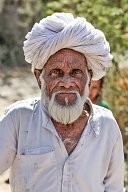
Portraits of men in Rajasthan
Sandrine Huet / Le Pictorium
LePictorium_0146611.jpg
Men of Rajasthan are very often breeders, ex nomads called Raikas.
they wear a 9 meter-long turban that is the main piece of their traditional costume. It has multi purposes and informs on the man's social status. Men in Rajasthan often have a mustache as a symbol of their virility.
they wear a 9 meter-long turban that is the main piece of their traditional costume. It has multi purposes and informs on the man's social status. Men in Rajasthan often have a mustache as a symbol of their virility.
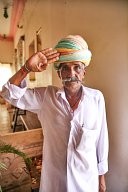
Portraits of men in Rajasthan
Sandrine Huet / Le Pictorium
LePictorium_0146618.jpg
Men of Rajasthan are very often breeders, ex nomads called Raikas.
they wear a 9 meter-long turban that is the main piece of their traditional costume. It has multi purposes and informs on the man's social status. Men in Rajasthan often have a mustache as a symbol of their virility.
they wear a 9 meter-long turban that is the main piece of their traditional costume. It has multi purposes and informs on the man's social status. Men in Rajasthan often have a mustache as a symbol of their virility.
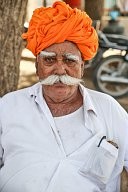
Portraits of men in Rajasthan
Sandrine Huet / Le Pictorium
LePictorium_0146619.jpg
Men of Rajasthan are very often breeders, ex nomads called Raikas.
they wear a 9 meter-long turban that is the main piece of their traditional costume. It has multi purposes and informs on the man's social status. Men in Rajasthan often have a mustache as a symbol of their virility.
they wear a 9 meter-long turban that is the main piece of their traditional costume. It has multi purposes and informs on the man's social status. Men in Rajasthan often have a mustache as a symbol of their virility.

Portraits of men in Rajasthan
Sandrine Huet / Le Pictorium
LePictorium_0146620.jpg
Men of Rajasthan are very often breeders, ex nomads called Raikas.
they wear a 9 meter-long turban that is the main piece of their traditional costume. It has multi purposes and informs on the man's social status. Men in Rajasthan often have a mustache as a symbol of their virility.
they wear a 9 meter-long turban that is the main piece of their traditional costume. It has multi purposes and informs on the man's social status. Men in Rajasthan often have a mustache as a symbol of their virility.
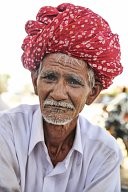
Portraits of men in Rajasthan
Sandrine Huet / Le Pictorium
LePictorium_0146621.jpg
Men of Rajasthan are very often breeders, ex nomads called Raikas.
they wear a 9 meter-long turban that is the main piece of their traditional costume. It has multi purposes and informs on the man's social status. Men in Rajasthan often have a mustache as a symbol of their virility.
they wear a 9 meter-long turban that is the main piece of their traditional costume. It has multi purposes and informs on the man's social status. Men in Rajasthan often have a mustache as a symbol of their virility.
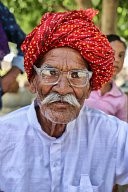
Portraits of men in Rajasthan
Sandrine Huet / Le Pictorium
LePictorium_0146622.jpg
Men of Rajasthan are very often breeders, ex nomads called Raikas.
they wear a 9 meter-long turban that is the main piece of their traditional costume. It has multi purposes and informs on the man's social status. Men in Rajasthan often have a mustache as a symbol of their virility.
they wear a 9 meter-long turban that is the main piece of their traditional costume. It has multi purposes and informs on the man's social status. Men in Rajasthan often have a mustache as a symbol of their virility.
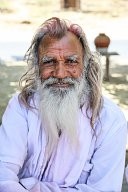
Portraits of men in Rajasthan
Sandrine Huet / Le Pictorium
LePictorium_0146624.jpg
Men of Rajasthan are very often breeders, ex nomads called Raikas.
they wear a 9 meter-long turban that is the main piece of their traditional costume. It has multi purposes and informs on the man's social status. Men in Rajasthan often have a mustache as a symbol of their virility.
they wear a 9 meter-long turban that is the main piece of their traditional costume. It has multi purposes and informs on the man's social status. Men in Rajasthan often have a mustache as a symbol of their virility.
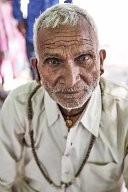
Portraits of men in Rajasthan
Sandrine Huet / Le Pictorium
LePictorium_0146629.jpg
Men of Rajasthan are very often breeders, ex nomads called Raikas.
they wear a 9 meter-long turban that is the main piece of their traditional costume. It has multi purposes and informs on the man's social status. Men in Rajasthan often have a mustache as a symbol of their virility.
they wear a 9 meter-long turban that is the main piece of their traditional costume. It has multi purposes and informs on the man's social status. Men in Rajasthan often have a mustache as a symbol of their virility.
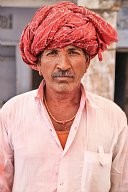
Portraits of men in Rajasthan
Sandrine Huet / Le Pictorium
LePictorium_0146630.jpg
Men of Rajasthan are very often breeders, ex nomads called Raikas.
they wear a 9 meter-long turban that is the main piece of their traditional costume. It has multi purposes and informs on the man's social status. Men in Rajasthan often have a mustache as a symbol of their virility.
they wear a 9 meter-long turban that is the main piece of their traditional costume. It has multi purposes and informs on the man's social status. Men in Rajasthan often have a mustache as a symbol of their virility.
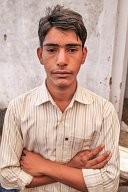
Portraits of men in Rajasthan
Sandrine Huet / Le Pictorium
LePictorium_0146635.jpg
Men of Rajasthan are very often breeders, ex nomads called Raikas.
they wear a 9 meter-long turban that is the main piece of their traditional costume. It has multi purposes and informs on the man's social status. Men in Rajasthan often have a mustache as a symbol of their virility.
they wear a 9 meter-long turban that is the main piece of their traditional costume. It has multi purposes and informs on the man's social status. Men in Rajasthan often have a mustache as a symbol of their virility.
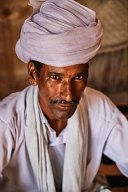
Bishnoi man preparing a decoction of opium
Sandrine Huet / Le Pictorium
LePictorium_0146664.jpg
the Bishnois are a desert tribe of Rajasthan. Bishnoi means the number 29, linked with their 29 life principles based on ecology and the respect of nature and animals.
The decoction of opium is a welcoming ritual, also used during weddings. In the past, it was also aimed to give strength and rigor to warriors and their horses.
The decoction of opium is a welcoming ritual, also used during weddings. In the past, it was also aimed to give strength and rigor to warriors and their horses.
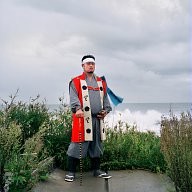
The Fukushima samurais / Portraits
Noriko Takasugi / Le Pictorium
LePictorium_0142649.jpg
Shingo, 34, used to live in Odaka-ku with his wife and children. Their "favorite house" with an ocean view on a hill was washed away 20-meter inland by the tsunami. Downstairs part of the house was completely destroyed. He took me to the side of the house where there used to be a stable and now there is nothing left but the foundation. "We enjoyed watching the ocean from this point," Shingo says, "All the belongings including armor for Soma Nomaoi and two horses that we had taken care of as family were washed away." He let his wife and children move to a neighboring city where the level of radiation exposure is lower while he kept running his own business that removes debris and reconstructs things in Minamisoma city. "I have to stay here and work to raise my family. I'm trying not to think too much about the immediate impact of radiation on our body," says Shingo. His parents living in Tokyo are worried about him.
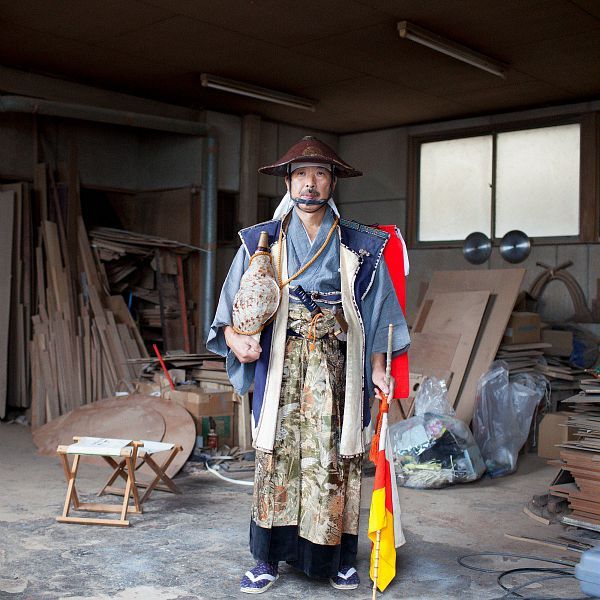
The Fukushima samurais / Portraits
Noriko Takasugi / Le Pictorium
LePictorium_0142653.jpg
Yoshiyuki, 59, took me to his former house that was also his small furniture factory in Odaka-ku where he had lived since he was born and worked locally for more than 35 years. In July 2012, he moved all the equipment from his former home to his new home in another city, where he evacuated to and lives now, to restart the furniture business there. "We might return to Odaka-ku some day but I don't want my children to live here," says Yoshiyuki. "When the disaster occurred, my daughter was in the third trimester of pregnancy. We were trying to determine the best place for her to give birth while moving around for evacuation." He acts as Kaiyaku who blows a conch horn during Soma Nomaoi. "I feel grateful that I have support from my family to participate in Soma Nomaoi, especially last year 2011 and this year 2012 while I was trying to participate during leading evacuation life
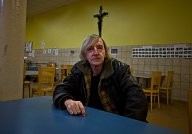
The breadcrumbs, the Emergency's Social Inclusion
Sylvain Leser / Le Pictorium
LePictorium_0120267.jpg
Emergency Shelter - La Mie de Pain, Paris
Portrait of the welcomed at the Shelter
Portrait of the welcomed at the Shelter
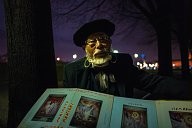
Emergency Shelter
Sylvain Leser / Le Pictorium
LePictorium_0120270.jpg
Emergency Shelter -
Portrait of the welcomed at the Shelter
Portrait of the welcomed at the Shelter
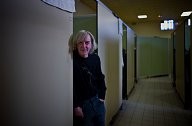
The breadcrumbs, the Emergency's Social Inclusion
Sylvain Leser / Le Pictorium
LePictorium_0120292.jpg
Emergency Shelter - La Mie de Pain, Paris
Portrait of the welcomed at the Shelter
Portrait of the welcomed at the Shelter
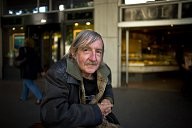
The breadcrumbs, the Emergency's Social Inclusion
Sylvain Leser / Le Pictorium
LePictorium_0120321.jpg
The breadcrumbs, the Emergency's Social Inclusion -
Intimate portrait of those I call "the Other", in the sense, you and me. Patrick and I take a coffee around the home, and again I raise the portrait
Intimate portrait of those I call "the Other", in the sense, you and me. Patrick and I take a coffee around the home, and again I raise the portrait
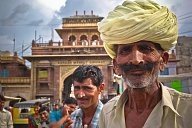
Rajhastan
Country of Lords & Gypsies
Jodhpur
Country of Lords & Gypsies
Jodhpur
Sylvain Leser / Le Pictorium
LePictorium_0122007.jpg
Sardar Bazar
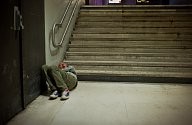
Urban misery
Sylvain Leser / Le Pictorium
LePictorium_0117915.jpg
Urban misery -
Gare de Lyon in Paris
Gare de Lyon in Paris
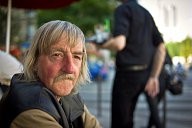
Urban misery
Sylvain Leser / Le Pictorium
LePictorium_0117964.jpg
Urban misery -
Patrick, Avenue d'Italie
Patrick, Avenue d'Italie
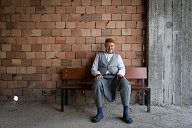
ADIYAMAN: DAECH'S NEST iN TURKEY
Chris Huby / Le Pictorium
LePictorium_0107813.jpg
A local muslim in Adiyaman
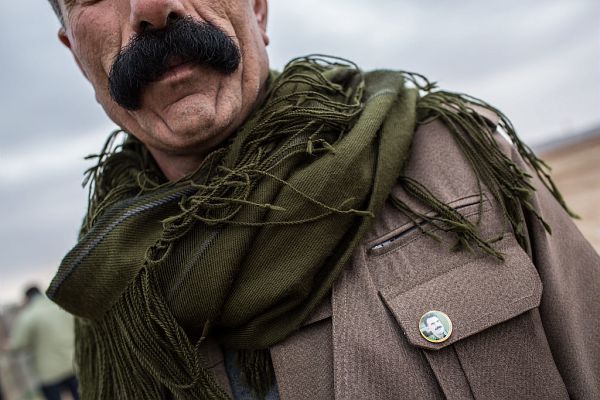
Turkey: kurdish villages supporting Kurds fighters in Kobani
Chris Huby / Le Pictorium
LePictorium_0095548.jpg
A kurdish fighter with the badge of APO, the nickname of Abdullah Ocalan, one of the founders of the PKK. PKK fighters of the villages near the border gather here waiting to go to Syria to defend Kobani.

Turkey: kurdish villages supporting Kurds fighters in Kobani
Chris Huby / Le Pictorium
LePictorium_0095549.jpg
A kurdish fighter with the badge of APO, the nickname of Abdullah Ocalan, one of the founders of the PKK. PKK fighters of the villages near the border gather here waiting to go to Syria to defend Kobani.
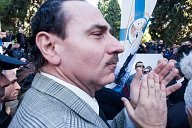
Greece : Golden Dawn
Stefania Mizara / Le Pictorium
LePictorium_0083865.jpg
The funeral of Nikos Dertilis took place in Athens, on Thursday 31 of January. Nikos Dertilis was the sole surviving member of the 1967-74 military dictatorship’s imprisoned top officials, died of an acute cerebral episode in an Athens hospital on Monday 28th of January at the age of 92. Members and deputies of the far right party Golden Dawn came to honor the Junta general’s funeral.The ex-colonel had spent the last 37 years in prison after receiving a life sentence for the murder of 20-year-old student Michalis Myroyiannis during the Athens Polytechnic uprising in November 1973.

Greece : Golden Dawn
Stefania Mizara / Le Pictorium
LePictorium_0070737.jpg
The funeral of Nikos Dertilis took place in Athens, on Thursday 31 of January. Nikos Dertilis was the sole surviving member of the 1967-74 military dictatorship’s imprisoned top officials, died of an acute cerebral episode in an Athens hospital on Monday 28th of January at the age of 92. Members and deputies of the far right party Golden Dawn came to honor the Junta general’s funeral.The ex-colonel had spent the last 37 years in prison after receiving a life sentence for the murder of 20-year-old student Michalis Myroyiannis during the Athens Polytechnic uprising in November 1973.
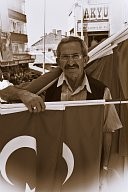
Turkish portraits.
Chris Huby / Le Pictorium
LePictorium_0063014.jpg
The diversity of the faces in Turkey, from poor areas of Istanbul to Antakya.
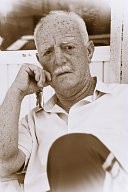
Turkish portraits.
Chris Huby / Le Pictorium
LePictorium_0063015.jpg
The diversity of the faces in Turkey, from poor areas of Istanbul to Antakya.
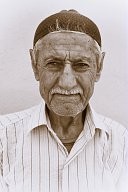
Turkish portraits.
Chris Huby / Le Pictorium
LePictorium_0063016.jpg
The diversity of the faces in Turkey, from poor areas of Istanbul to Antakya.
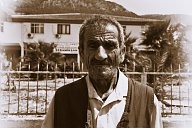
Turkish portraits.
Chris Huby / Le Pictorium
LePictorium_0063017.jpg
The diversity of the faces in Turkey, from poor areas of Istanbul to Antakya.
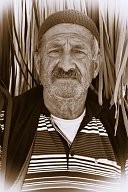
Turkish portraits.
Chris Huby / Le Pictorium
LePictorium_0063018.jpg
The diversity of the faces in Turkey, from poor areas of Istanbul to Antakya.
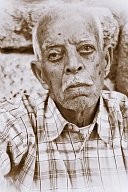
Turkish portraits.
Chris Huby / Le Pictorium
LePictorium_0063019.jpg
The diversity of the faces in Turkey, from poor areas of Istanbul to Antakya.
Next page

